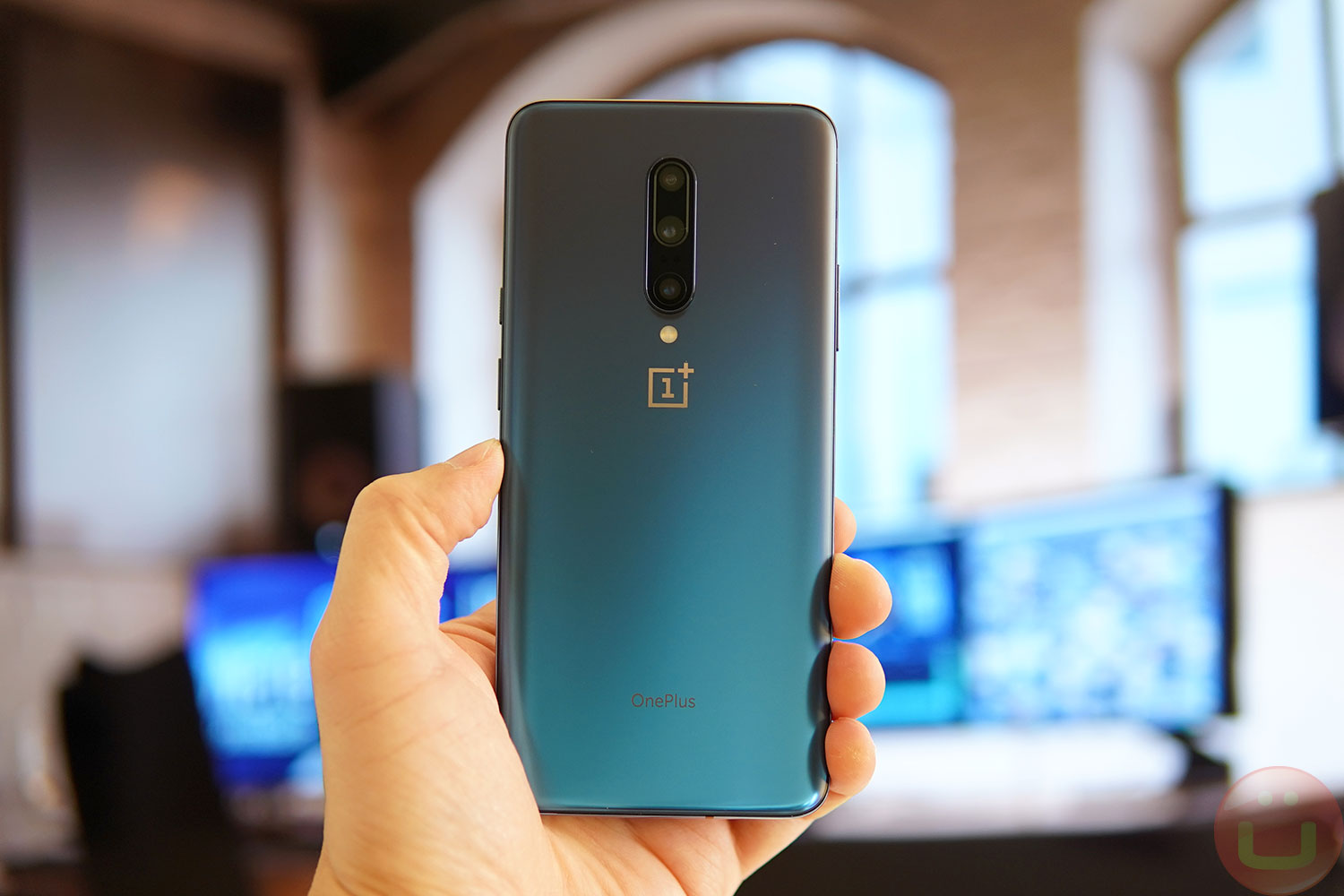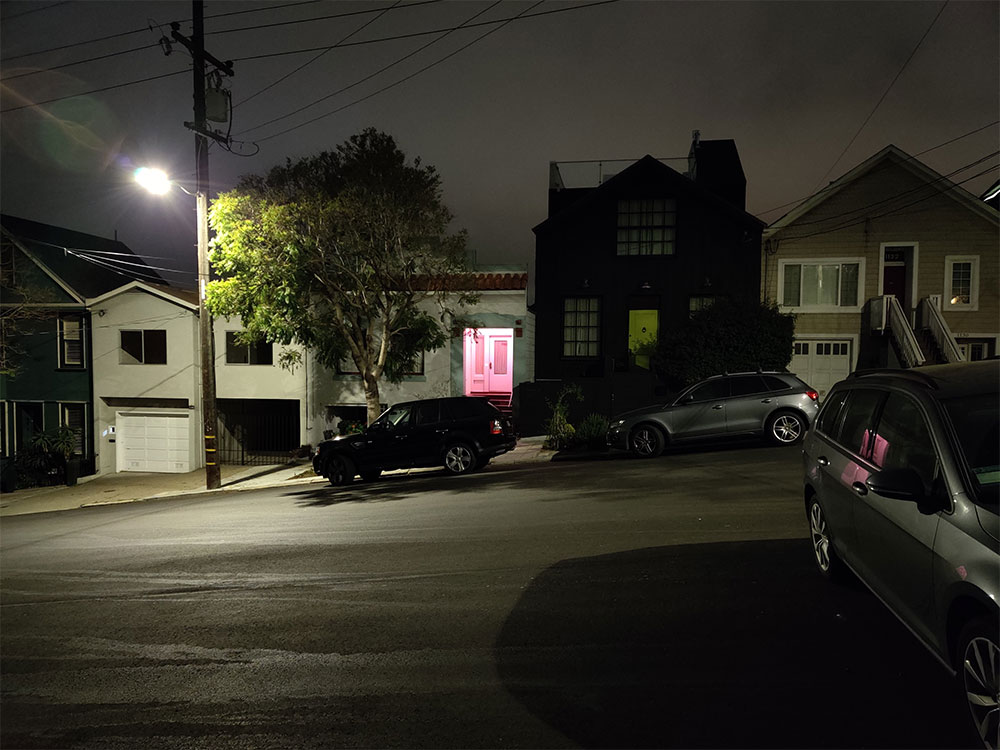
OnePlus has a reputation for being a “Flagship Killer” by releasing very powerful phones at incredibly affordable prices. The OnePlus 7 Pro is perhaps the most expensive phone they’ve launched yet but can OnePlus justify it, or has it become like every other OEMs? Let’s take a look.
Specifications Highlights
This is a quick look at the device’s specifications to refresh your memory ahead of the review. As you can see, the handset brings high-end functionalities, including the powerful Qualcomm Snapdragon 855 and an impressive 3-cameras array in the back.
| Specifications Highlights | |
|---|---|
| Product | OnePlus 7 Pro (2019), Price: 699 USD |
| Display | 6.67″ 3120×1440 AMOLED |
| Rear Camera(s) |
|
| Selfie Camera(s) |
|
| Computing |
|
| Battery | 4000 mAh, Warp Charge 3.0 (30) |
| Design | |
Industrial Design

The OnePlus 7 Pro is a big phone, and this is an essential trait you need to take into consideration as you may have different choices at purchase time. For example, it is 16% bigger than the Galaxy S10+, 10% bigger than the Huawei P30 Pro and even larger (in volume) than the iPhone Xs Max.
It is about as heavy as the iPhone Xs Max, but the Galaxy S10+ is 15% lighter, while the Huawei P30 Pro is 7% lighter.

Size matters when it comes to the display surface area, which is one of the OnePlus 7 Pro’s main selling point. It has between 5% to 7% more screen space than the competitors above, and if you take the absence of visible selfie camera into consideration, the extra surface area becomes a substantial added-value. More on the display later.

The overall build quality is outstanding, and OnePlus has joined leading handset makers in using the double-glass design, with curved edges and an almost bezel-less design.
"THE OVERALL BUILD QUALITY IS OUTSTANDING"The glass back-cover is original: it uses a sand-blasted look that creates a diffuse lighting effect on the colored surface treatment. This also makes any fingerprints much less visible although they may be present. That’s an excellent idea, and the phone also comes in Black and Gold color.
The handset feels great in hand (I wear US M-size gloves for size reference), and the Power button lands naturally under the finger whether you are right or left handed. There’s a textured sound profile selector to let you quickly turn off the ring and notification settings.

Overall, OnePlus has been smart with its design and has optimized it to be cost-efficient, and the fact that it has a large display helps this goal. For example, the Galaxy S10+ is ~16% smaller, has a 22% higher battery capacity density and similar performance as the OnePlus 7 Pro. S10+ also has a brighter display that potentially generates much heat.
Of these things packed in a smaller volume are harder and more expensive to build. By using a larger design, OnePlus can avoid or displace some of these challenges and ultimately provide a package that is substantially less expensive.
Water-resistant, but not certified as such
The OnePlus 7 Pro has not been certified with an IP rating to prove that it is water-resistant. OnePlus has defended the lack of certification by saying that they can make phones water-resistant, without paying for the relatively expensive certification.
Independent tests show that yes, the OnePlus 7 Pro can withstand immersion. We tested that ourselves, so it’s likely that it would survive an unexpected water encounter. However, we don’t know exactly how much resistance it has.
Stereo speakers, no 3.5mm port
Like many designs that feature a speaker grill/earpiece, the OnePlus 7 Pro claims to have a stereo loudspeaker setup. It’s technically “stereo” in the context of smartphones, but keep in mind that most of the sound is coming from the bottom-firing speaker, and a bit of the high-pitch soundwaves come from the earpiece.
We found the speakers to do relatively well, but not at the level of handsets like the iPhone Xs Max, Galaxy S10, or the LG G7, which we found to be exceptional.
OnePlus is licensing some Dolby technology that you may want to play with because it can make different types of music or movies sound a lot better.
Unfortunately, there’s no 3.5mm port although there should be ample room to fit one. It’s a missed opportunity here because OEM studies show that people do want that option, but we’ll assume that OnePlus has done its market research homework.
Display: 6.67-inch, comfortable and high-quality

As we said earlier, the large display is the star of the show. Many efforts have been made to seduce potential buyers with it.
It’s fantastic for watching movies, using the camera, and consuming content in general. It’s also great for work, and reading emails is more comfortable. Typing with a slightly larger keyboard can be faster and easier on your fingers as well.
From a display quality standpoint, the OnePlus 7 Pro is great. For instance, the color reproduction is top notch and has pretty much nothing to envy to handsets like the Galaxy S10+ or the iPhone Xs Max, except for brightness. One of the reasons for it is that Samsung is the supplier of the OLED panel.
At 515 PPI, the OnePlus 7 Pro’s display is 22% sharper than the Huawei P30 Pro’s and 11% sharper than the iPhone Xs Max. We mentioned the brightness of the S10+ (1363 NITs) and Xs Max (1016 NITs) earlier, and that’s the main reasons why these S10 and Xs displays are superior. In our tests, the Oneplus 7 Pro hits a maximum of “only” 715 NITs.
On a sunny day, brighter displays are more readable, and our tests reward that somehow. By the way, some reviews say that the S10+ isn’t as bright, but that’s not the case. S10+ caps at ~750 NITs in manual mode, but auto mode, it can jump to 1363 NITs (as we tested) and the reason for auto-mode is that it shouldn’t sustain that brightness for heat reasons.
90Hz refresh rate means hyper-smooth experience
The OnePlus 7 Pro display works at 90Hz, which means that it can display up to 90 images per seconds. 90Hz has an evident impact on the maximum frame-rate of certain games that would then become smoother, and in some ways, the OnePlus 7 Pro is also a great gaming phone.
However, just about everyone can enjoy a 90Hz user interface which is ~50% more smooth and fluid when you do simple things such as scrolling through your web pages and content or when you navigate the different menus. It’s just much more agreeable to interact with a 90Hz touchscreen.
"JUST MORE AGREEABLE TO INTERACT WITH A 90HZ TOUCHSCREEN"People are more or less sensitive to this, but the chances are that you would have a hard time going back to 60Hz after experiencing 90Hz extensively. If you want to try, perhaps you can force your laptop screen to 30 Hz (instead of 60).
Please note that a smoother experience doesn’t mean a “faster” experience. When you scroll around, things are more fluid, but they take the same amount of time. If “faster” is of interest, OnePlus lets you turn the animations OFF, and that would make transitions instantaneous.
The resolution is “adaptive,” which means that it flips from FHD to QHD depending on the content. We are talking about the internal rendering resolution from FHD to QHD, which is pretty smart and suitable for battery life. Other handsets let you manually select a resolution, but if it can happen in the background without any visible sign, that’s even better.
There’s even a built-in Night Mode and Reading mode, which I don’t use, but it could be beneficial for some people.
In-screen fingerprint Reader

The in-screen fingerprint reader uses an optical reader, and it’s an evolution of the technology introduced by OnePlus in its OnePlus 6T handset.
It works the same, but the performance and accuracy have been greatly improved. Yes, it’s faster than the ultrasonic fingerprint reader of the Galaxy S10, but it also flashes a bright light, which is a bit annoying at night. It also has issues with greasy and wet fingers, but a bit less so.
Camera: excellent performance

We spent much time testing the rear camera of the OnePlus 7 Pro, and we concluded that it is nearly (but not entirely) as good as the Galaxy S10/S10+ camera, so it’s an excellent positioning right there. If you want all the details, we recommend reading our extensive OnePlus 7 Pro camera review.
Check: The complete list of the Best Smartphone Cameras
The Galaxy S10 is slightly better in both daylight and ultrawide photography, but the OnePlus 7 Pro can challenge it in low-light and performs a tiny bit better in extreme low-light. Overall, our Camera Benchmark shows that S10 has a slightly better camera, but not by much.
Above and below: the comparison show that both the S10 and OnePlus 7 Pro have a relatively natural color capture at night, without too much image processing.
Below: at 0.04 LUX of brightness the Galaxy S10 camera is noticeably less noisy.
Below, the OnePlus 7 Pro 74mm zoom outclasses the Galaxy S10 54mm zoom in image quality.
If you come from an iPhone, the OnePlus 7 Pro has an overall camera performance that is beyond anything Apple has to offer today, and you’ll have to wait until October until the iPhone gets a triple rear camera.
Apple remains one of the best cameras in daylight conditions, but that’s pretty much it. Our iPhone Xs tests show that it lags in low-light, zoom and has no ultrawide support.
Retractable selfie camera

To avoid any notch or punch-hole to house the selfie camera, OnePlus has made a motorized design that pops in and out of the phone’s body.
It’s a pretty cool design, and if you don’t take many selfies, it’s fantastic to get more display real estate and no visual distraction. However, this design has consequences and raises some questions as well.
The first consequence is that the Face Unlock speed is limited by how fast the camera can come out. OnePlus had one of the fastest (although unsecure) face unlocks, and waiting for the camera to come makes things much slower. Personally, it adds enough friction that I would no longer use Face Unlock.
Secondly, people wonder about the durability of such a mechanism. It’s impossible to know for sure, but OnePlus says that the camera design has was tested with up to 300,000 open/close cycles, which gives it a life span of many years of “normal usage.” Also, if you use Face Unlock, it is more taxing on that selfie motor.
OnePlus uses sensors to protect the camera. The proximity sensor prevents it from opening/closing when it is in your pocket or bag. In case you drop the phone, the motion sensor closes the camera immediately, and we estimate that it should retract fast enough for a ~2.5 feet drop.
The selfie image quality is good, but not impressive and doesn’t displace or compete with, the Galaxy S10+ or the Huawei P30 Pro. The OnePlus 7 Pro selfies aren’t as detailed as these leading phones, even in relatively bright lighting.
Software and User Interface

Since OnePlus is still relatively unknown to the general public, let’s talk about the phone’s user interface called Oxygen OS.
It is a layer on top of Android that allows OnePlus to add specific functionalities that its user-base demands. OnePlus often asks its users what they would like to see implemented and makes some of the most popular features come to life.
As for functionalities not initially present in Android, there’s a screen video recorder which is super-handy when you’re trying to explain someone else how to do something. Just record the steps and send the video.

The Gaming Mode that serves to shut down notifications and customize your gaming environment, is customizable but straightforward at the same time.
For maximum productivity, you can disable all the user interface animations to have things appear and disappear instantly.
Finally, the different physical buttons can be customized to trigger different actions when you long-press or double-tap. This option can be extremely useful for some users and is equivalent to having even more hardware buttons!
OnePlus 7 Pro Speed
With a Snapdragon 855 chip powering its user experience, the OnePlus 7 Pro is just as fast as the Galaxy S10 and many other phones powered by the same platform. Classic CPU (Geekbench) and Graphics (GFXBench) benchmark show as much.


The 7 Pro has with liquid cooling (vapor cooling), just like the Galaxy S10, and it makes complete sense: with more internal volume, why should OnePlus not add this option and it’s one more thing that makes the OnePlus 7 Pro a potentially great gaming or VR/AR handset. It has an excellent price/performance ratio:
"ONEPLUS 7 PRO: A POTENTIALLY GREAT GAMING PHONE"
With 6/8/12 GB of RAM, there are performance and prices options for everyone. Most people are perfectly fine with 6GB of RAM, but power-users who like to install a ton of apps can opt for more memory to push back the performance cliff that sometimes happens when you just have too much stuff on your phone.
The UFS 3.0 storage interface also helps apps load faster by accelerating “disk” read and writes when compared to previous generations of this standard.
Wireless and communications
When it comes to 4G LTE, the OnePlus 7 Pro supports up to 1.2Gbps in download and 211 Mbps in upload. That’s the bit less than the Galaxy S10 that has a theoretical speed of 2.0 Gbps and 316 Mbps in upload, respectively.
In the real world, it’s difficult to get anywhere near that speed, but what we do know, is that the average real-world speeds are correlated to the maximum theoretical speed, if the network conditions allow.
Also, this handset doesn’t support WiFi-6, the latest WiFi standard that is built into the Galaxy S10 series. It’s not a huge deal if you don’t have a WiFi router, but maybe your workplace supports or maybe you would want to upgrade later.
Battery
The battery capacity of 7 Pro is 4000 mAh, which is impressive in general, and very good in its “high-end” category.
Battery life is one of the most sought-after features of a handset. A key metric is, of course, the battery capacity — especially within the same ecosystem (Android, iOS, or other).

Battery life can be affected by a bunch of factors, but the main ones are the central processor aka SoC, display and wireless radios (LTE broadband, WiFi, the cell towers location and more).
It is not possible to accurately pinpoint through benchmarks how much energy consumption YOUR unique needs induce. However, two things are surely always good:
- A larger battery capacity
- Rapid charging
How many apps on-board and their activity cannot be estimated. Battery capacity is the essential indicator of battery endurance for YOUR usage.
"BETTER OVERALL BATTERY PERFORMANCE THAN APPLE OR SAMSUNG"With a charging speed of 83 mAh/mn, the 7 Pro charge speed is one of the fastest in absolute terms and is equaled by few. This is objectively a better overall battery performance than Apple or Samsung. Huawei remains the fastest in our tests for now, with 101 mAh/mn for the Mate 20 Pro and P30 Pro phones.

There is no integrated wireless charging, unfortunately, and while not everybody cares, more and more people demand this feature nowadays, which is available on many competitors at this price range.
Conclusion (9.2/10)

OnePlus has always pursued the idea of offering high-end features at “affordable” prices, and it has delivered once again.
As of today, the OnePlus 7 Pro ($699) gets an algorithm-driven Ubergizmo “Value Score” of 6.2/10, while the OnePlus 6T ($625, street price) gets the same score. In comparison, the P30 Pro ($1,200) has a value score of 4.2. The scores change when the price does, and if anything that’s the angle from which this phone could be a “flagship killer”.
Product Scores (out of 10)
- Overall: 9.2
- Display: 8.3
- Design: 8.5
- Performance: 9.4
- Battery: 8.7
- Camera: 9.8
- Value: 6.2
If the nominal price of OnePlus 7 Pro is higher, it’s also because OnePlus brings accordingly better technology into your hands. And it shows: the OnePlus 7 Pro camera performance has jumped measurably from OnePlus 6T. The display, battery, and performance have shown progress as well, all in the tune of 10%-15%, according to our internal review scores.
If you look objectively, the OnePlus 7 Pro is a formidable smartphone, but technically speaking the Galaxy S10+ has almost the same surface area (-7 to 10%), has wireless charging, a faster LTE and WIFI, a 3.5mm phone jack, a 90% brighter display, and all of that, in a smaller form-factor.
"NOT A FLAGSHIP KILLER, BUT A DAMN GOOD DEAL"The OnePlus 7 Pro is not “the best” at most things, but it is the reason why such a great value proposition is possible: OnePlus can focus resources on specific points, and consciously target a specific segment of the market. We don’t think of it as a flagship killer, but it’s a damn good deal.
Thanks to careful design choices, it gets an overall score of 9.2 led by excellent camera and speed capabilities, while technical design and display brightness are not as “high-end.”
In conclusion, the OnePlus 7 Pro brings some serious firepower at a very attractive price, and in a fresh product design. And since T-Mobile officially supports it, OnePlus 7 Pro has a commercial advantage over other brands that may not have a presence in carrier channels.
Filed in . Read more about Editors Choice, Editorspick, OnePlus, OnePlus 7 Pro and Smartphone Reviews.

















